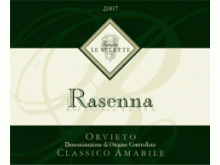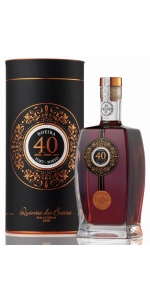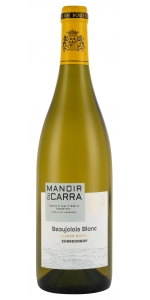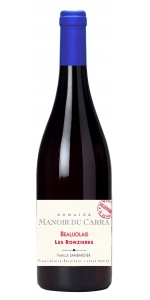Velette Orvieto Amabile 2011
| Country: | Italy |
| Region: | Umbria |
| Winery: | Tenuta Le Velette |
| Grape Type: | Trebbiano |
| Vintage: | 2011 |
| Bottle Size: | 750 ml |
All older vintage wines have been purchased from a single collectors cellar. Pictures can be requested before shipment.
All older vintage wines have been purchased from a single collectors cellar. Pictures can be requested before shipment.
Lambrusco Amabile Bruscus San Valentino Red is 100% Lambrusco from grapes grown in the province of Modena and Reggio Emilia.
Traditional vinification methods combined with modern technology to produce wines of guaranteed quality. After the grapes are pressed, they are transferred to fermentation tanks where the must is racked off in an average of 70 hours. The wine then completes its first rapid fermentation process and passes to the slower fermentation phase, during which time it is racked off several times to improve its clarity. The wine is placed in an autoclave at strictly controlled temperatures wherein it undergoes a second fermentation. This is known as the Charmat Method. The temperature is controlled for full development of the bouquet and for the lively and natural sparkle so characteristic of this wine.
Deep ruby red with violet reflections and a fine perlage.
Intense vinous bouquet with hints of ripe red fruits.
Lively, fresh, sweet and inviting with bright fruit and a delightful sparkle.
Excellent by itself or with desserts of dark chocolate, gorgonzola, cheesecakes.
It has a brownish red color.
Intense and complex, aged for many years in French oak. It has an elegant cigar leaf aroma. Dense and round in the mouth with dried fruit, honey and notes of crystallized fruit. A velvety and persistent finish.
RS: 114g/Liter
TA: 3.7g/Liter
Pairings: Digestive: Dried fruits, caramel sweets and conventual sweets (portuguese pastries).
Carra Beaujolais Blanc Pierres Dorees is made from 100 percent Chardonnay.
The nose shows step by step floral and fruity aromas. A vanilla hint in the end with a lingering finish: those are typical Chardonnay aromas.
Carra Beaujolais Rouge Les Ronzieres is made from 100% Gamay.
From granitic and sandy soils, this Beaujolais Rouge exhibits a nice color, with hints of cherry and garnet, and reveals aromas of red fruit dominated by cassis and strawberry. This cuvée was specially made to enjoy young with an easy drinking mouthfeel perfect for charcuterie and cheeses.
30% Trebbiano, 30% Grechetto, 20% Malvasia, 15% Verdello and 5% Drupeggio.
Though today Orvieto Classico D.O.C. 'secco' is the major success, for centuries Orvieto wine was characteristically slightly sweet, a condition sought and obtained through forced maturation of the grapes and vinification in the cool cellars carved out of the tufa rock. The straw yellow colour is intense, the flavours are those of mature fruits, sweet and rich. The satisfying acidity on the palate is accompanied by a soft sweet sensation, which smoothes it and gives it roundness and fullness.
An excellent accompaniment for delicate or structured first courses, soft and semi-matured cheeses. Very good as a dessert wine especially with fruit tarts and the traditional crunchy biscuits and cakes.
Recommended temperature: 10 - 12° C
Origin of the name: The first evidence of a society given to cultivating the grape on these hills is of Etruscan origin and the wine produced was most likely sweet. Hence a method and a tradition which have made the fortune of these lands for centuries. The word the Etruscans used for their people was precisely "Rasenna".
The Tenuta Le Velette Estate
The hill on which the Le Velette estate is situated, to the east of the rock on which stands Orvieto, has always been a point of great agricultural and strategic interest in the course of its three thousand year history. The position, controlling a good part of the valley of Orvieto, the volcanic terrain exposed to the sun from dawn till dusk, and the special microclimate with significant thermal swings between night and day have always been its good fortune.
The first to see its great wine-growing potential were the Etruscans, the people who had already in the 7th century B.C. imported the vine from the Greeks. They certainly used the hill as a rural settlement for its cultivation and dug grottoes in the tufo rock, (just as we still do today), which offered excellent conditions for wine conservation. During Roman times, the hillside kept its wine-making role but developed significantly also as a strategic check point: right in the middle of the present estate, where Villa Felici stands today, a control tower was built and a resting-place for travellers, which led to significant development in the area.
After a difficult period of barbarian and Longobard invasions, the area regained great importance as papal state land. In this period the Etruscan grottoes were extended and became a safe refuge and place of worship for the first monks who settled there soon after.
With the advent of feudalism, the area passed into the hands of the Negroni counts, feudal lords of a nearby village, preserving its wine-making function for centuries before being given in endowment to a monastic order by a descendent who had become an abbot.
At the unification of Italy everything went to the city of Orvieto, which sold the estate to the Felici family. And so began the first experimentations in the vineyard and the cellar which led in very few years to the production of excellent wines, as is testified by the medals won in that period in Roman oenological competitions. The estate's wine went into commerce in the new-born Italy.
The fundamental step towards modern viticulture and oenology was taken in the 1950s when the brilliant Tuscan agronomist, Marcello Bottai, and his wife Giulia, a descendent of the Felici family, chose to make the estate their home and life project. This was the start of a period of development geared to a proper appreciation of the full potential not only of the firm but also of the whole district. The production of high quality wines was established along with the setting up of systems for the development and protection of Orvieto viticulture. A fundamental move was the foundation with other producers of what would become the present consortium for the safeguard of Orvieto wines. An absolutely innovative vision for the times that the young couple not only had had the wit to conceive but which they also had the courage and determination to bring into existence.
The Tenuta Le Velette Vineyard
They carefully and selectively harvest from their own 90 hectares (222 acres) of vineyards. The excellent exposure provides all day sun and the rich tufaceous soil is of volcanic origin.
- back
All older vintage wines have been purchased from a single collectors cellar. Pictures can be requested before shipment.
Dark plum in color with abundant aromas of dark chocolate, black cherry, and sun-ripened blackberry with a hint of cedar. Layered flavors of blackberry and raspberry pie filling, accompanied by notes of cinnamon, chocolate, and nutmeg play on the palate. Smooth and focused with refined tannins and a medium finish.



-150x300.jpg)






